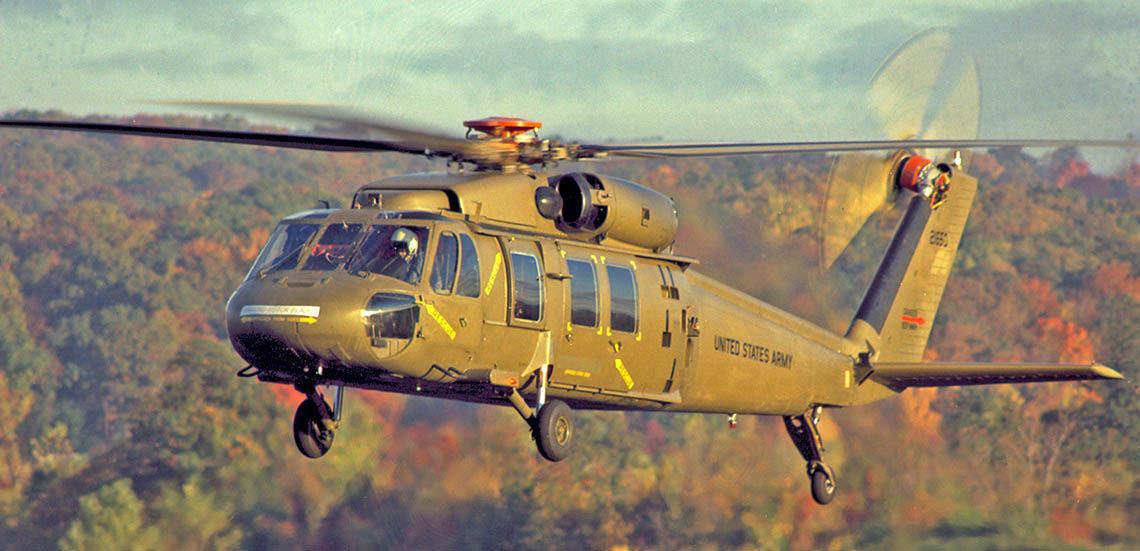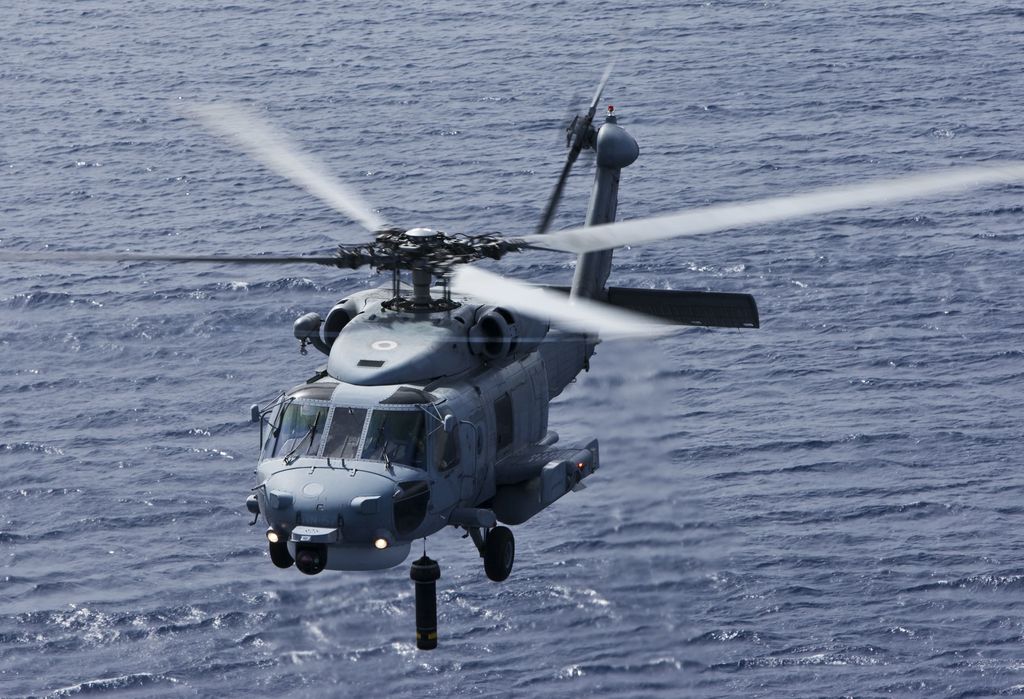How the Sikorsky S 70 Stands Apart in the Helicopter Market
How the Sikorsky S 70 Stands Apart in the Helicopter Market
Blog Article
High-Performance Multi-Role Rotorcraft Featuring Advanced Cockpit Technologies and Integrated Sensing Unit Solutions
The realm of rotorcraft technology has seen noteworthy advancements in current times, particularly in the world of high-performance multi-role rotorcraft equipped with sophisticated cabin modern technologies and effortlessly incorporated sensing unit systems. In the following discussion, we will certainly check out the development of rotorcraft modern technology, dive right into the realm of advanced cabin advancements, and examine the ramifications of integrated sensor systems on the operational adaptability and performance of modern rotorcraft.
Advancement of Rotorcraft Modern Technology
The development of rotorcraft innovation has been marked by substantial developments in aerodynamics, materials, and propulsion systems, forming the capabilities and performance of modern-day rotorcraft. Aerodynamic improvements have boosted the performance and maneuverability of rotorcraft, allowing for enhanced speed, agility, and security during trip (sikorsky s 70). Innovations in products, such as making use of composite products and progressed alloys, have caused lighter yet stronger rotorcraft frameworks, improving general efficiency and durability. In addition, advancements in propulsion systems, consisting of more effective engines and cutting-edge propulsion modern technologies, have allowed rotorcraft to accomplish higher altitudes, faster speeds, and higher payloads.
These improvements have not only changed the capacities of rotorcraft yet have actually additionally increased their applications across different sectors, including army, industrial, and emergency situation solutions. The constant evolution of rotorcraft technology remains to drive advancement in the field, pressing the borders of what is feasible and shaping the future of vertical flight.
Advanced Cockpit Innovations
Building upon the fundamental developments in the rules of aerodynamics, products, and propulsion systems, the realm of rotorcraft modern technology currently moves focus towards pioneering Advanced Cockpit Innovations. The integration of innovative technologies within the cabin environment plays an essential role in enhancing the functional capabilities, security, and effectiveness of modern rotorcraft. sikorsky s 70. Advanced Cockpit Innovations incorporate a broad selection of features developed to give pilots with boosted situational understanding, structured data management, and instinctive control user interfaces
One of the essential improvements in cockpit style is the application of glass cockpits, which replace conventional analog gauges with high-resolution screens. These electronic systems offer personalized formats, real-time information combination, and boosted readability, making it possible for pilots to gain access to vital info at a glance. Moreover, progressed avionics systems, such as fly-by-wire controls and increased truth display screens, are revolutionizing how pilots connect with the airplane, enabling precise control and boosted decision-making capacities.


Integrating innovative cockpit innovations not only improves pilot performance but additionally contributes to total goal performance and security in complex functional environments. By leveraging state-of-the-art innovations within the cockpit, rotorcraft makers are setting new standards for functional excellence and goal success.
Integrated Sensing Unit Equipments
With the development of rotorcraft innovation, the assimilation of sophisticated Integrated Sensing unit Solution has come to be paramount in enhancing functional effectiveness and safety and security. These Integrated Sensor Systems incorporate a large variety of technologies that give essential information for different features such as navigation, surveillance, targeting, and ecological monitoring. By seamlessly integrating sensors like radars, electronic cameras, lidar, and infrared systems into rotorcraft, drivers can gain from enhanced situational awareness, improved mission capacities, and reduced pilot work.
One key benefit of Integrated Sensor Equipments is their capacity to gather real-time data and give actionable understandings to pilots and mission drivers. Advanced radar systems can detect and track targets over long distances, permitting for early risk discovery and effective response preparation. Furthermore, incorporating electro-optical and infrared cameras allows rotorcraft to perform reconnaissance and surveillance missions with accuracy and precision.
Essentially, the combination of advanced sensor innovations right into rotorcraft not just improves functional efficiency but likewise contributes substantially to overall goal success and crew security. As rotorcraft continue to advance, the duty of Integrated Sensor Equipment will certainly continue to be at the leading edge of technology in the aerospace market.
Functional Flexibility and Performance
Enhancing operational adaptability and effectiveness in rotorcraft is a natural progression from the assimilation of sophisticated Integrated Sensor Solutions. By leveraging the understandings and data given by these innovative sensing unit systems, rotorcraft can enhance their performance across different goals and atmospheres.
Functional convenience encompasses the capability of rotorcraft to adjust to various duties and situations efficiently. With click to find out more sophisticated cockpit modern technologies and incorporated sensor systems, rotorcraft can seamlessly change in between jobs such as search and rescue, medical discharge, surveillance, and more. This flexibility boosts the rotorcraft's capability to fulfill diverse operational needs without needing extensive reconfiguration.
Performance in rotorcraft go to website operations is vital for optimizing mission performance and resource application. Integrated sensing unit systems play a critical duty in improving operational effectiveness by providing real-time data on weather, terrain mapping, target monitoring, and a lot more. This data makes it possible for pilots to make educated decisions quickly, enhance trip courses, conserve gas, and enhance general mission efficiency.
Influence On Modern Aviation Workflow

Moreover, the combination of advanced sensors assists in enhanced objective preparation and implementation, making it possible for rotorcraft to perform a large range of tasks with boosted accuracy. From search and rescue operations to aerial firefighting and legislation enforcement goals, the capabilities of contemporary rotorcraft geared up with advanced cabin innovations and integrated sensor systems are unequaled.
Additionally, the effect of these improvements expands beyond functional performance to cost-effectiveness and sustainability. By optimizing trip courses, fuel usage, and upkeep routines, high-performance rotorcraft outfitted with advanced cockpit innovations and sensing units add to decreasing operational expenses and ecological influence, making them important possessions in modern-day aeronautics operations.
Conclusion
To conclude, the high-performance multi-role rotorcraft with innovative cabin technologies and integrated sensor systems represents a considerable development in aeronautics modern technology. These innovations enhance operational flexibility and efficiency, eventually impacting contemporary air travel procedures in a favorable method. The combination of these sophisticated modern technologies enables enhanced capabilities and performance in various mission circumstances, showcasing the proceeded innovation of rotorcraft modern technology in the aeronautics market.
The world of rotorcraft modern technology has actually seen notable improvements in current times, specifically in the world of high-performance multi-role rotorcraft furnished with advanced cockpit modern technologies and perfectly incorporated sensing unit systems. From improved objective versatility to enhanced functional performance, the merging of advanced cockpit innovations and incorporated sensing unit systems has see this ushered in a brand-new period of opportunities for rotorcraft applications. In the following conversation, we will certainly explore the evolution of rotorcraft technology, dig right into the world of advanced cabin advancements, and analyze the ramifications of integrated sensor systems on the functional convenience and performance of modern rotorcraft.

Report this page